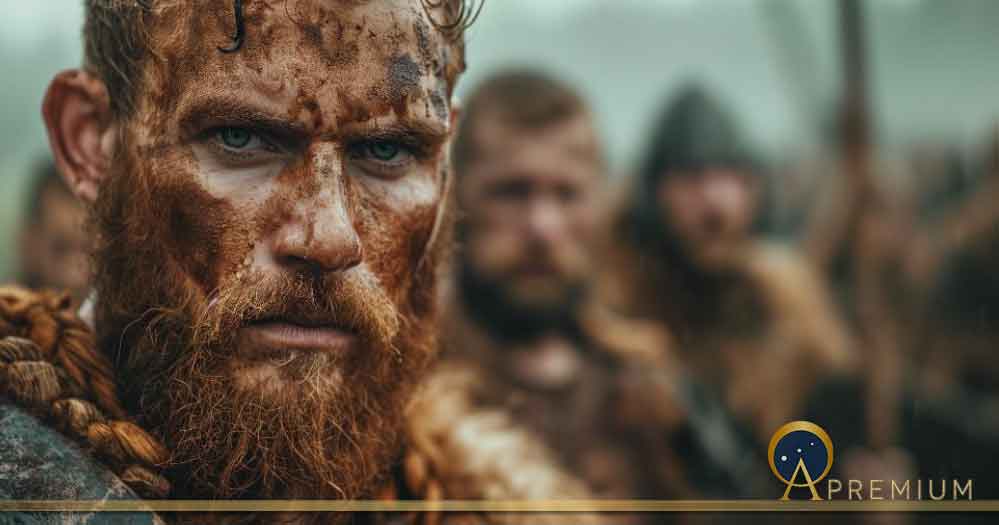Viking Blots, Beserkers and Barbaric Blood Eagles
Famed for their ruthless fighting skills and brave exploring, little is written about Viking religion and their day-to-day ritual practices which were arguably a more central component in Norse cultures than warring. Contrary to what pop-culture might have one think, daily life for Vikings didn't involve sailing on violent conquests to new lands, but rather a meat-filled, human-sacrificing, hyper-spiritualized agricultural experience.
The men would almost certainly farm by day and at night sleep in a big open room with the entire family (and possibly their goats). Women generally kept domestic affairs running smoothly and occasionally accompanied the family to feasts at the local chieftain's longhouse. During winter both sexes skied, which is evident by the depictions left on a 5,000-year-old rock carving discovered in the municipality of Rødøy, Norway, depicting a skier with one pole.
Parents would have passed their knowledge on to their children through oral communications rather than writing - this is why accounts of the Viking’s written by outsiders are often incorrect, having misunderstood what they witnessed or failed to understand what they were told. Vikings placed high importance on making sacrifices to their gods and goddesses, yet the Vikings’ spiritual beliefs are regarded as a ‘non-doctrinal community religion’ meaning specific beliefs and rituals often varied from village to village and region to region.
Although most Vikings shared beliefs in common similar deities, and their influences on reality, there were no set ritual practices and people worshiped the gods relevant to their lifestyles by communicating with spirits of dead ancestors using sorcery and divination and differing burial practices. These are some of the spiritual traditions of the Viking’s which are known to be accurate, but be warned, some of these practices are on another level of gore.
The Blot
In the 13th century, Snorri Sturluson recorded a detailed description of a ceremony called a ‘ Blót ’ which was performed by Sigurd Hakonsson to achieve the goodwill of the gods, but it also allowed chiefs to show off their wealth to surrounding communities. Blót is the term for sacrifice in Norse paganism and it began with all the local farmers gathering at the temple and sacrificing many horses. Cooked horse meats and ale were blessed by the chief and toasts were offered to both the god Odin and dead ancestors. This sacrifice ritual was carried out in large groups controlled by local chiefs who acted as priests during the ceremonies. During this ritual, twigs were used to spray blood around the temple and all over the participants.
This is a preview of a Premium article. Read the rest and uncover more secrets of the ancient world with Ancient Origins Premium. Join today for exclusive articles, videos, eBooks, an ad-free experience, and more. Unlock your journey back in time now!
Top Image: Vikings had many rituals. Source: tiagozr / Adobe Stock
By Ashley Cowie

















